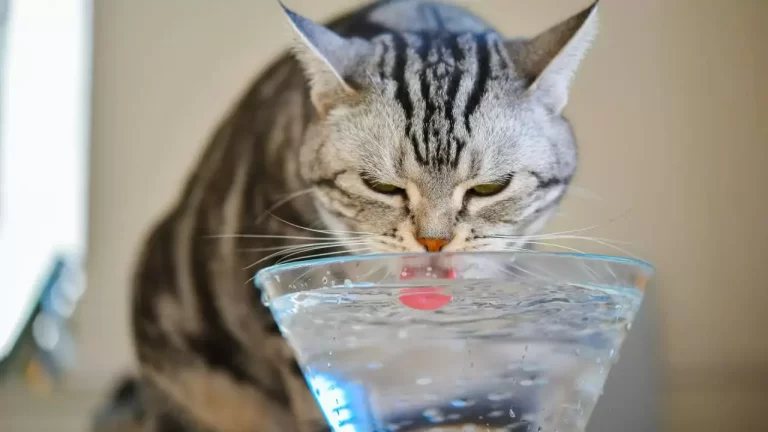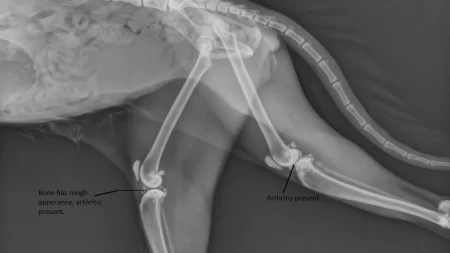Cats can survive without water for approximately three to four days. Within the first 24 hours of not drinking water, cats may become dehydrated, leading to stress on their organs, potential electrolyte imbalances, and the risk of organ damage. It is crucial for cats to have access to fresh water daily to maintain their well-being.
In this article, we will explore how much water cats need, how to tell if they are dehydrated, why they may not be drinking enough water, and how to encourage them to drink more water.
How Long Can Cats Go Without Water?
Recommended Amount of Water for Cats
The amount of water a cat needs varies depending on its size, age, and lifestyle. However, a common guideline is that a cat should drink about 60 milliliters of water per kilogram of body weight per day. For example, a 4-kilogram cat would need about 240 milliliters of water per day, which is equivalent to one cup. This amount may increase or decrease depending on the cat’s activity level, weather, and diet.
Signs of Dehydration
Dehydration occurs when a cat loses more water than it takes in. This can happen due to various reasons, such as vomiting, diarrhea, fever, infection, or reduced water intake. Dehydration can have serious consequences for a cat’s health, such as kidney failure, organ damage, or even death. Therefore, it is important to recognize the signs of dehydration and seek veterinary care if needed. Some of the common signs of dehydration in cats are:
- Dry mouth and nose
- Sunken eyes
- Lethargy and weakness
- Loss of appetite
- Reduced skin elasticity
- Increased heart rate and breathing
To check the skin elasticity, gently pinch the skin on the back of the cat’s neck and release it. If the skin snaps back quickly, the cat is well-hydrated. If the skin stays up or returns slowly, the cat is dehydrated.
Risks of Not drinking Enough Water
Not drinking enough water can lead to various health problems for cats, such as:
- Urinary tract infections and stones
- Constipation and intestinal blockage
- Heatstroke and hyperthermia
- Liver and kidney disease
- Metabolic disorders and electrolyte imbalance
Reasons Why Cats May Not Be Drinking Water
There are many possible reasons why a cat may not be drinking enough water, such as:
Medical Conditions
Some medical conditions can affect a cat’s thirst and water intake, such as diabetes, hyperthyroidism, kidney disease, or dental problems. These conditions can cause increased urination, vomiting, diarrhea, pain, or loss of appetite, which can result in dehydration. If a cat shows any signs of illness or abnormal behavior, it is advisable to consult a veterinarian for diagnosis and treatment.
Behavioral Issues
Some cats may have behavioral issues that prevent them from drinking enough water, such as stress, anxiety, fear, or boredom. These issues can affect a cat’s mood, appetite, and activity level, which can affect its water intake. Some of the common causes of stress in cats are:
- Changes in the environment, such as moving, remodeling, or introducing new pets or people
- Lack of stimulation, enrichment, or social interaction
- Conflicts or competition with other cats or animals
- Loud noises, unfamiliar smells, or strangers
To reduce stress in cats, it is important to provide them with a safe, comfortable, and stimulating environment, where they have access to food, water, litter boxes, toys, scratching posts, hiding places, and resting areas. It is also important to respect their individual preferences, personalities, and boundaries, and avoid forcing them to do something they do not like.
Unappealing Water Source
Some cats may not like the water source they are given, such as the bowl, the location, the temperature, or the taste of the water. Some of the factors that can make a water source unappealing for cats are:
- Dirty or contaminated water or bowl
- Plastic or metal bowl that can alter the taste or smell of the water
- Small or deep bowl that can touch the cat’s whiskers or face
- Static or stagnant water that can harbor bacteria or parasites
- Cold or warm water that can be uncomfortable or unpalatable
- Hidden or inaccessible water bowls that can be hard to find or reach
How to Encourage Your Cat to Drink More Water?
There are many ways to encourage a cat to drink more water, such as:
Fresh and Clean Water
One of the simplest and most effective ways to encourage a cat to drink more water is to provide it with fresh and clean water at all times. The water should be changed at least once a day, and the bowl should be washed regularly to prevent dirt, dust, or bacteria from accumulating. The water should also be at room temperature, as some cats may not like cold or warm water. The water bowl should be placed in a quiet, visible, and accessible location, away from food, litter boxes, or other sources of stress or distraction. It is also a good idea to provide multiple water bowls throughout the house, especially if there are multiple cats or floors.
Alternative Sources of Hydration
Some cats may prefer to drink water from alternative sources, such as:
- Faucets or sinks
- Fountains or streams
- Ice cubes or frozen treats
- Rain or dew
- Plants or grass
These sources can provide more stimulation, variety, or freshness for cats, which can increase their interest and curiosity. However, it is important to make sure that these sources are safe, clean, and suitable for cats, and do not contain any harmful substances, such as chemicals, pesticides, or toxins.
Wet Food Diet
Another way to increase a cat’s water intake is to feed it a wet food diet, or a combination of wet and dry food. Wet food contains about 75% water, while dry food contains about 10% water. Therefore, by feeding a cat wet food, it can get more water from its food, which can help prevent dehydration and urinary problems. Wet food can also provide more flavor, aroma, and texture for cats, which can stimulate their appetite and taste buds. However, wet food can also have some disadvantages, such as being more expensive, spoiling faster, or causing dental issues. Therefore, it is important to consult a veterinarian before changing a cat’s diet and follow the recommended feeding guidelines and portions.
When to Seek Veterinary Care
If a cat is not drinking enough water or shows signs of dehydration, it is important to seek veterinary care as soon as possible. Dehydration can be a serious and life-threatening condition for cats and can indicate an underlying health problem. Some of the situations when a cat may need veterinary care are:
When to be Concerned
A cat may need veterinary care if it:
- Has not drunk any water for more than 24 hours
- Has lost more than 10% of its body weight
- Has severe or persistent vomiting or diarrhea
- Has a fever, infection, or injury
- Has difficulty breathing or swallowing
- Has blood in its urine or stool
- Has a history of kidney disease, diabetes, or other chronic conditions
Potential Consequences of Prolonged Water Deprivation
If a cat does not drink enough water for a prolonged period of time, it can suffer from various consequences, such as:
- Kidney failure and damage
- Organ failure and damage
- Shock and coma
- Death
Treatment Options for Dehydration in Cats
The treatment for dehydration in cats depends on the severity, cause, and symptoms of the condition. Some of the common treatment options are:
- Fluid Therapy: This involves administering fluids intravenously or subcutaneously to replenish the cat’s hydration and electrolyte levels. This can be done at the veterinary clinic or at home, depending on the cat’s condition and preference.
- Medication: This involves giving the cat medication to treat the underlying cause of dehydration, such as antibiotics, anti-inflammatory, anti-nausea, or anti-diarrheal drugs. This can help reduce the symptoms and prevent further water loss.
- Dietary Changes: This involves changing the cat’s diet to a more hydrating and nutritious one, such as wet food, broth, or supplements. This can help increase the cat’s water intake and improve its health and well-being.







